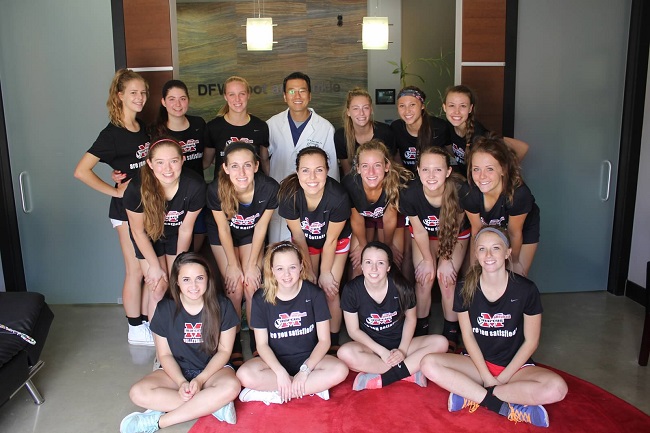 Some of the most common ways to get injured while playing sports are ankle sprains and breaks. A 2014 survey by the American Podiatric Medical Association showed that one out of every four adults feels unable to exercise because of foot pain, and 39 percent said they would exercise more if their feet didn’t hurt. As a podiatric physician and specialist of the foot, my goal is to keep people walking and functioning comfortably.
Some of the most common ways to get injured while playing sports are ankle sprains and breaks. A 2014 survey by the American Podiatric Medical Association showed that one out of every four adults feels unable to exercise because of foot pain, and 39 percent said they would exercise more if their feet didn’t hurt. As a podiatric physician and specialist of the foot, my goal is to keep people walking and functioning comfortably.
Myths About Foot or Ankle Injuries
• It can’t be broken because I can move it.
o FALSE! Many are still able to walk after sustaining breaks in the smaller, outer bone of the lower leg or a small chip fracture.
• If you break a toe, immediate care is not necessary.
o FALSE! With prompt attention and x-rays, a podiatrist will be able to develop the correct treatment plan.
• Applying an elastic bandage to a severely sprained ankle is adequate treatment.
o FALSE! Ankle sprains could mean torn or overstretched ligaments, so seek immediate care.
To help avoid sports related foot and ankle injuries make sure you choose the best footwear for each activity in which you participate. Each sneaker provides a different type of support.
What Shoe Should I Wear for What Sport?
• Basketball, tennis, and volleyball: Thick, stiff sole that gives support. Also, for basketball, look for high-top sneakers to support the ankle during quick changes in direction. For volleyball, consider a lighter shoe with less midsole support.
• Football and lacrosse: With frequent sideways movements, good high ankle support is important. Also, traction on both wet and dry fields is important. Proper traction on shoes can help prevent injury.
• Soccer: Shoes with good quality footbed to provide proper arch support are recommended. Also, consider using molded rubber cleats instead of the screw-on options.
• Baseball/softball: Shoes with arch support are important for baseball. Consider using inserts called orthotics to help with arch pain. There should be no more than a half-inch of space between the big toe and the end of the shoe.
• Running: A good shoe will give you maximum shock absorption. Don’t forget to match your shoe to your foot’s arch type and replace shoes after 300-500 miles!
Always remember, hand-me-down shoes and ill-fitting footwear can increase the danger of ankle injuries. Applying these tips to daily life will help insure you maintain the ability to walk comfortably for a long time!
Contact DFW Foot and Ankle, P.A., 2281 Olympia Drive, Suite 200, Flower Mound, TX 75028 at 972-899-2170.
Dr. Suh is an active physician at Texas Health Presbyterian Hospital Flower Mound and a current member of the medical executive committee. Dr. Suh is a graduate of the California College of Podiatric Medicine and completed Podiatric surgical residency at Cornell University/Wyckoff Height Medical Center in New York.
Texas Health Presbyterian Hospital Flower Mound is a joint venture owned by Texas Health Resources and physicians dedicated to the community and meets the definition under federal law of a physician owned hospital. Doctors on the medical staff practice independently and are not employees or agents of the hospital.
Dr. Davey Suh is with the DFW Foot and Ankle, P.A.
This content is being provided by a sponsor of The Cross Timbers Gazette.












 GIF.gif)



